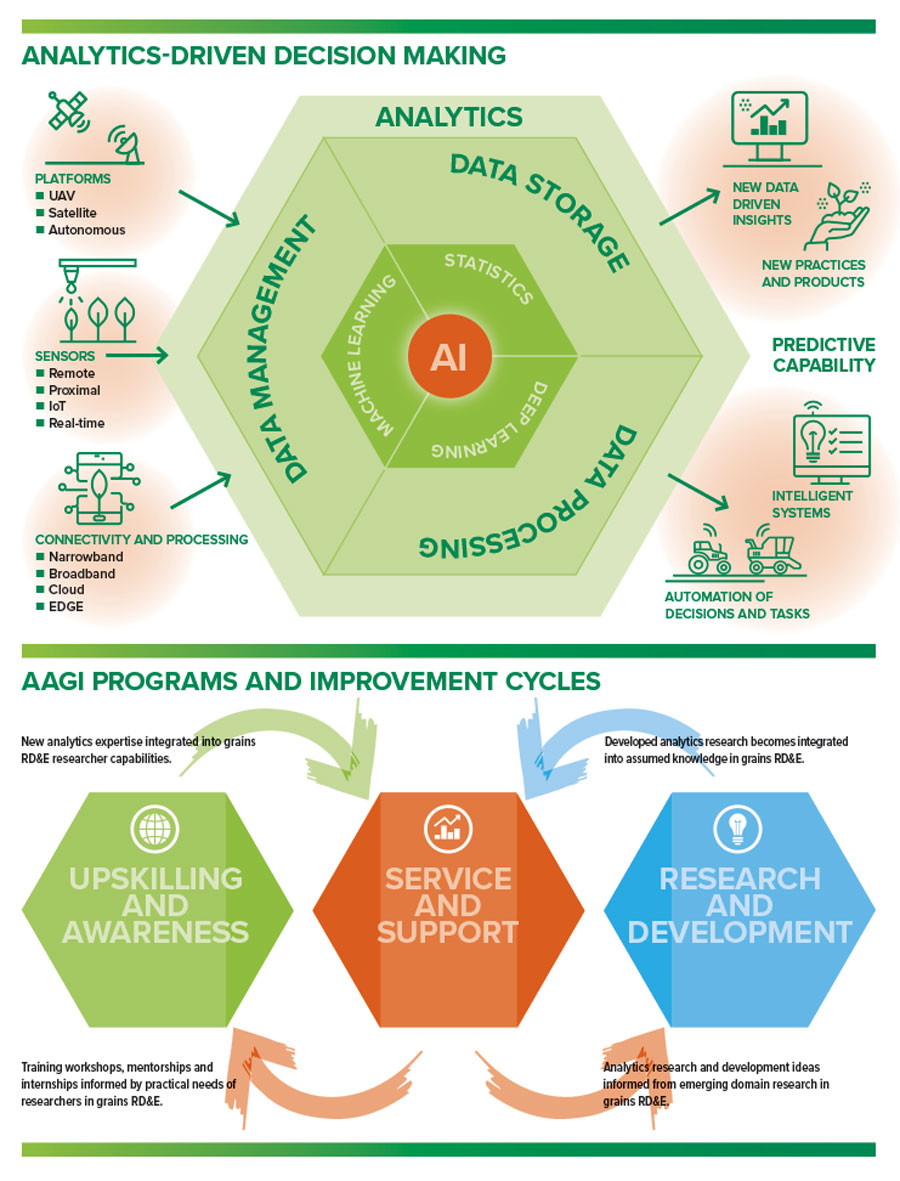Key points
- The grains sector is evolving into a data-driven industry that requires rigorous analytical capabilities to convert raw data into valuable insights for growers and the broader industry
- ‘Analytics for the Australian Grains Industry’ is a new GRDC data science investment harnessing cutting-edge statistics, machine learning, data fusion and analytics to improve the speed, accuracy and efficiency of RD&E for Australian growers
The era of data-driven decision-making is opening new pathways for increasing industry profitability.
The grains sector is undergoing an immense transformation, evolving into an industry driven by data.
Current and future research, development and extension (RD&E) projects require a rigorous, data-driven approach. Statistical and analytical capabilities are critical for converting raw data into meaningful knowledge for growers and the broader grains industry.
For more than a decade, GRDC has identified the value of utilising data science and statistics to benefit the Australian grains industry investing in biometrics. The foundational work of GRDC’s $23.8 million ‘Statistics for the Australian Grains Industry 3’ (SAGI3) investment ran from 2016 to 2023. SAGI3 provided statistical expertise to more than 210 GRDC investments totalling more than $490 million.
As a result of these investments, growers now benefit from better germplasm selections in pre-breeding programs, clearer research-driven agronomic recommendations, and tools that use data to support on-farm decision-making.
GRDC is now building on this strong foundation to unleash the potential of a combination of cutting-edge statistics, machine learning, data fusion and analytics for Australian grain growers.
Analytics for the Australian Grains Industry (AAGI) is a new flagship GRDC investment, a five-year strategic partnership aimed at harnessing analytics to drive the grains sector’s profitability and global competitiveness.
GRDC has committed $36 million over five years to AAGI, which complements a $56 million co-investment from the initiative’s three strategic partners at Curtin University, the University of Queensland and the University of Adelaide.
AAGI creates a significant opportunity for Australian growers to be world leaders in analytics-driven decision-making to drive efficiency and precision in RD&E and support farm enterprise risk management.


AAGI’s mission is to use analytics in grains RD&E to help Australian grain growers become more profitable and globally competitive. They do this through:
- a collaborative investment partnership model with end-user focused innovation, greater cash and in-kind leverage, and international profile and scale; and
- building human capacity with analytics skills required to meet the needs of the Australian grains industry and RD&E sector.
AAGI is building a national ecosystem, working with academic and industry partners, directly growing substantial capacity in the grains RD&E analytics workforce, with investment to support the equivalent of 49 full-time researchers and 48 higher degree research students as well as delivering training and workshops across the country.
This increased capacity will broaden analytics capabilities, allow for more investment in high-priority research, and attract additional intellectual property, investment and expertise from the commercial sector and other parties.
AAGI is planning research and development to support:
- Utilisation of satellite and drone sensing technologies for digital agriculture applications;
- Simulation and analytical methods for supporting on-farm and supply chain decision-making;
- Supporting research in machine autonomy/intelligent systems, aligned with GRDC’s separate Grain Automate investments;
- Advanced phenotyping methods, including automated image analysis and segmentation;
- New statistics, machine learning, and bioinformatics approaches to support pre-breeding for biotic and abiotic traits;
- Understanding of the interaction of crop genetics, environmental variation, agronomic management, and biotic (e.g., pest, weed, disease) pressures.
More information: Dr Nathan O’Callaghan, nathan.ocallaghan@curtin.edu.au

























































